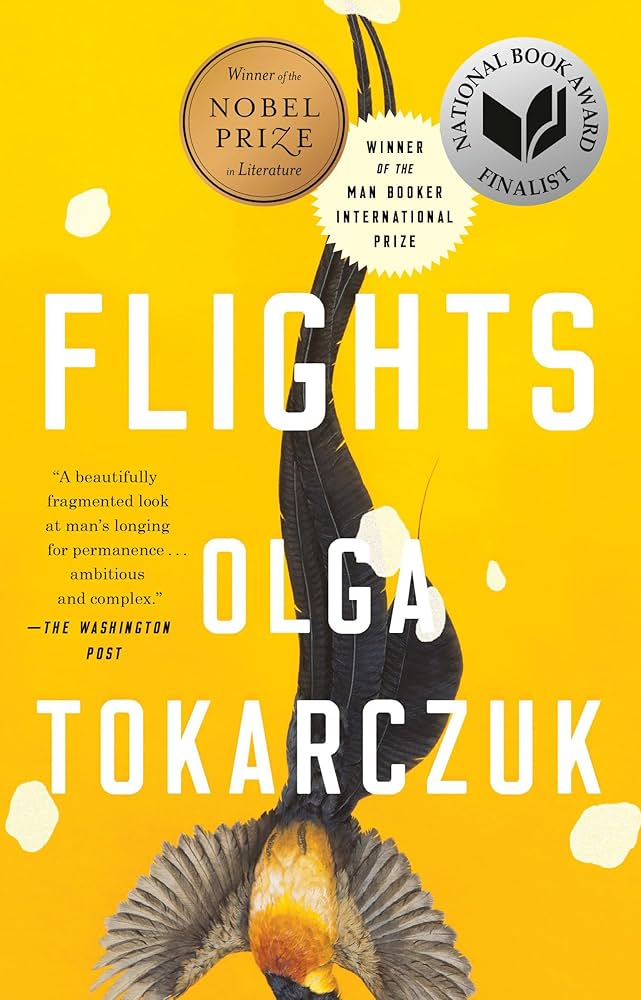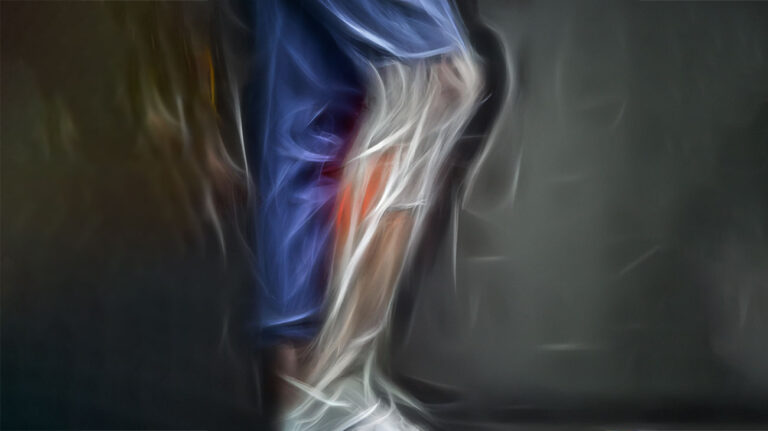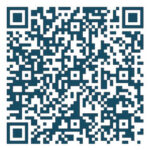Reading Flights by Olga Tokarczuk
The nature of phantom limb pain has bedeviled amputees and bewildered physicians and surgeons for centuries; up to 87% of amputees experience it during their lifetime. Consistently effective treatments remain elusive. Biomedical texts on the subject are at once complex and speculative. Olga Tokarczuk, in her 2018 novel, Flights, imagines what phantom limb pain could be like for someone, and the desperate search for relief it can produce.

Flights centers mostly on the narrator’s travels among different places and across different times. It comprises mostly packets of individual story vignettes and fragments; some short, some long; some fictional; some real, some both. And though many different stories are told with many different characters about many different subjects, something about travel connects them all.
Certain preoccupations manifest themselves in various parts of the book. One in particular concerns the technical aspects of preserving human body parts, which comes into play in a story fragment involving phantom limb pain. The main character is Philip Verheyen, who is a real historical figure known as a renowned Flemish surgeon and anatomist of the late seventeenth and early eighteenth centuries, and as the author of Corporis humani anatomiae (1710).
As Tokarczuk tells the story, Verheyen was twenty-eight-years old in 1676 during his second year of university in Leiden when he scraped his left calf on an exposed nail of the stairway leading to his rented lodgings. His pants were torn and his skin broken. Though the injury seemed minor at first, it evolved into a raging infection that later required below-the-knee amputation.
With the care of his landlady, Verheyen recovered after which he was seen “tapping his peg over the uneven paving stones of Leiden,” to attend lectures on the subject of anatomy at the university medical center.” (p. 195) In a matter of a few weeks after the amputation, however, the pain started.
The pains came at night as his body was relaxing and slipping across the uncertain boundary between waking and sleep…He would have the impression that his left leg was numb, and that he absolutely had to get it into the right position—he felt his toes tingling, an unpleasant sensation. He fidgeted, half conscious. He wanted to move his toes, but the unperformability of that movement awoke him completely. He would sit on the bed, tear the blanket off himself, and look at the aching place—it was some thirty centimeters below the knee, there over the rumbled sheet. He would close his eyes and try to scratch it, but he touched nothing, his fingers combed the void in despair, giving him no relief. (p. 203)
In imagining how Verheyen could respond to his desperation for relief, Tokarczuk draws on his intense interest in preserving human body parts. Before the amputation, he begs the surgeon to “preserve the removed leg.” (p. 193) The surgeon followed Verheyen’s detailed instructions for preparing his amputated limb by placing it “in a glass vessel filled with a balm of Nantes brandy and black pepper.” (p. 193) Verheyen kept it “on his headboard or stretched scarily out on the table.” (p. 196) Eventually, he looks to it as a possible source of relief.
Once, in a fit of despair, when the pain and itching were driving him mad, he stood and with trembling hands lit a candle. Hopping on one foot, he moved to the table the vessel with the cut-off leg [rested]…He extracted the limb and in the candlelight tried to locate in it the reason for the pain…He sat down on the floor, stretched his legs out before him, and laid the amputated limb on the place just below his left knee. He closed his eyes and groped for the painful place. His hand touched the cold piece of flesh—but could not reach the pain. (pp. 203-204)
Verheyen’s maneuvers and observations did not provide him relief. With his medical training, he begins thinking about mechanisms that could be causing this excruciating and frustrating phenomenon.
What is it that awakens me, when I feel pain and suffering, since my leg has been separated from me and is floating now in alcohol? There is nothing pinching it, no reason for its suffering, no such pain that can be logically justified, and yet it exists. Now I look at it and simultaneously feel in it, in the toes, unbearably hot, as though I were submerging it in hot water, and this experience is so real, so obvious, that if I were to shut my eyes, I would see in my own imagination the bucket of water overly heated and my own foot submerged from toes to ankle. I touch my bodily existing limb in the guise of a lump of preserved flesh—and I don’t feel it. I feel, meanwhile, something that does not exist, it is in a physical sense an empty place, there is nothing there that might give any sensation whatsoever. The thing that hurts does not exist. A phantom. Phantom pain. (p. 208)

He comes up empty.
Tokarczuk cannot imagine Verheyen would let the issue lie and accept it simply because he is without an anatomical or pathophysiological explanation. She knows that before he began his schooling in medicine, he was studying theology towards becoming a Catholic priest. In fact, in the book and in his real life, the amputation disqualified him from Catholic priesthood. So, Tokarczuk brings his theological training into thoughts he could have about this phenomenon that is torturing him from spiritual realms, and in this way leaving Verheyen to contemplate the mind / body relationship. He concludes, “The body is something absolutely mysterious.” (p. 209)
It still is.
Web image generated with Dall-E 2










